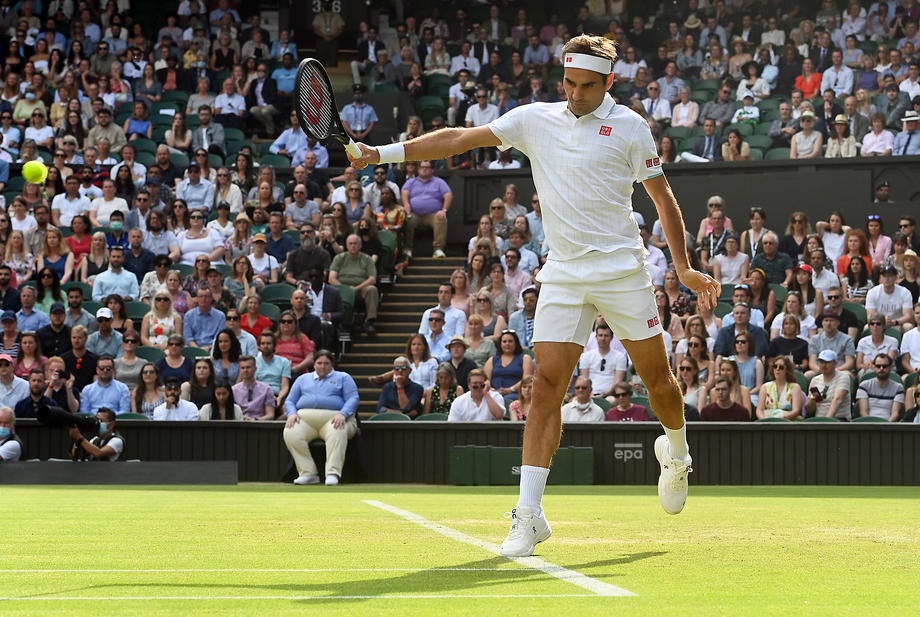- Ricky’s pick for the Australian Open final: Sinner vs. Zverev
- Australian Open Draws and Order Of Play for Sunday, January 26, 2025
- Madison Keys Upsets Defending Champion Aryna Sabalenka in Australian Open Final Thriller
- Ricky’s pick for the Australian Open final: Sabalenka vs. Keys
- Australian Open Draws and Order Of Play for Saturday, January 25, 2025
- The Australian Open Has Always prided Itself As the “Happy Slam” by Alix Ramsay
- Australian Open Draws and Order Of Play for Friday, January 24, 2025
- Ricky’s pick for the Australian Open semifinal between Djokovic and Zverev
- Courageous Keys Stuns Swiatek for First Australian Open Final
- Australian Open Draws and Order Of Play for Thursday, January 23, 2025
- Ricky’s pick for the Australian Open quarterfinal between Sinner and De Minaur
- Australian Open Draws and Order Of Play for Wednesday, January 22, 2025
- Goran Ivanisevic Is No Longer Coaching Elena Rybakina
- Ricky’s pick for the Australian Open quarterfinal between Alcaraz and Djokovic
- Australian Open Draws and Order Of Play for Tuesday, January 21, 2025
Craig Cignarelli Strolls Thru The Indian Wells Tennis Gardens To The 2018 BNP Paribas Open
- Updated: March 5, 2018
Photo by @BNPPARIBASOPEN via Twitter
2018 Indian Wells Tennis Garden
Oracle founder, Larry Ellison’s Tennis Garden continues to grow more spectacular every year. Now replete with nine stadiums, accessible practice courts, and near-Michelin level cuisine, this place competes with the world’s major events. After catching a few minutes of Dmitrov beating up on Tiafoe and Zverev the younger the ripping forehands hard enough to echo, I made my way down to watch experience vs. youth.
Today, Stadium 4 hosted Vera Zvonareva against Vicky Duval. In 2009, Vera won this tournament over Ivanovic. Today, she was an alternate into the qualies when Parmentier pulled out with an injury. The Russian has eleven years on the cancer survivor Duval, and in the first set, it showed. Here’s a quick summary.
Duval looks tight in the warm-up, catching eyes with USTA coach Kathy Rinaldi and making some strange errors. Zvonareva seems relaxed, although clearly fighting something bronchial as the intermittent coughs suggest she is choking on a moose.
Duval wins the toss, chooses to receive, and then head out onto the court while the veteran camps out in her chair tying her shoes for at least another thirty seconds. When ages are so disparate, these small head games take their toll. Duval spends the time doing a lot of wandering the baseline and shadowing strokes, then promptly dumps the first return into the net and follows with a string of unforced errors.
Duval is very quick, wears sunglasses and appears to be a player who would like to extend points in order to use her athleticism. The early errors may be attributable to the court speed and early round qualifying match, but they still make little sense for her game. Her deep inhales suggest the nerves are still there. The second missed return of the game means there is almost no chance to break and Zvonareva holds.
When Duval serves her first game, her toss hits about six different heights, and over the course of this match, she caught about eight of them. It’s a bit like Tin Cup on the eighteenth hole, but without the grand finale. The break happens quickly.
Duval tries driving the ball in her second return game, a good adjustment but one which fails to produce a break and she is down 3-0. Zvonareva moves confidently, seeing her opponent already trying to change her game and knowing she has enough experience to weather many styles of play. On changeovers, she covers her head with a towel and blows her nose hard enough to set off a car alarm. It’s not pretty.
Down 3-0, Duval finds her serve and holds easily. Zvonareva has been nursing a sore left calf and suddenly she begins limping on the court. Pushing off for her serve seems excruciating and she begins doubling more often than Aaron Judge on a hitting streak. Still, even with break points against her, she holds because Duval cannot seem to find the court enough to make her run.
With most talking tactics and nuance, is it evident many knowledgeable tennis fans are watching this match. After all, what type of people show up for qualies to sit in eighty degree heat and suffer this many unforced errors. Sitting in the crowd, you hear things like “her second serve is too weak,” “she forcing her shots for width instead of depth,” and “this kid is playing against the reputation instead of the player.” Such insights indicate these people have been around the game a while, and based on the amount of gray hair and wrinkled faces, that seems probable. This is Palm Desert.
At the changeover, Rinaldi heads out to coach Duval and, based on the next few games, suggested Duval change paces and keep more balls in play. Duval does so but Zvonareva had been top ten in the world. Slight changes of pace and spins are not as disruptive as they were in her youth and she breaks again. When your coach comes with advice and it fails to produce, players can deflate quickly and Duval appears to be a hot air balloon on the descent. But then, Zvonareva is struggling to stay on her feet during points and the left calf is now clearly an issue. She double faults three times to give the break back. Duval has an opportunity and needs to focus on making Zvonareva play longer points. Unfortunately for this match, Duval has an attacking mentality and commits three aggressive and unforced errors to give away the set. As a tennis fan, this was difficult to watch and I headed off for a lunch at Nobu. By the time my sushi arrived, the Russian had secured her victory 6-2, 6-1.
Watching the match, you’d have thought there was little difference in power, depth and variety in these two players. Yet, as is often the case, understanding matchplay rhythms, recognizing how pressure affects the other player, staying present for big points, and managing energy properly gave the more experienced player a significant edge toward victory. Many painful lessons from a first-round qualifying match. More to come tomorrow.






